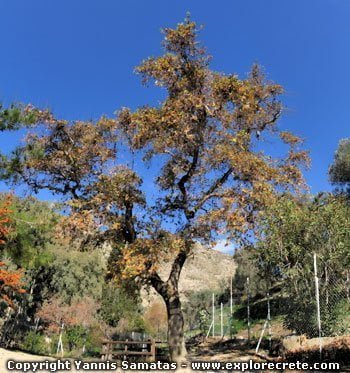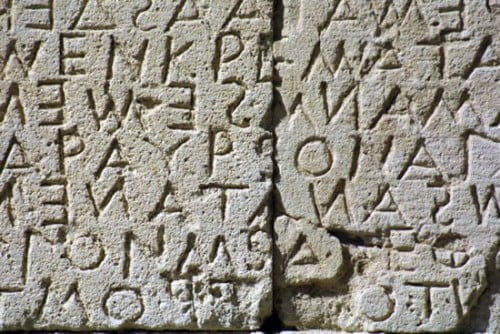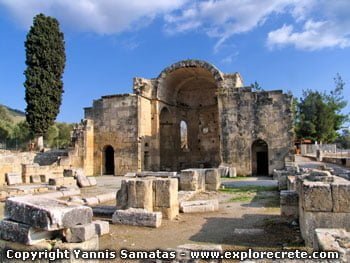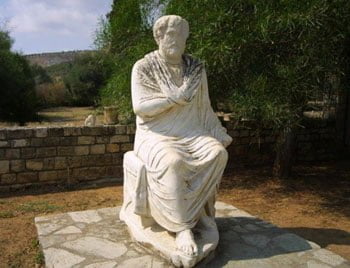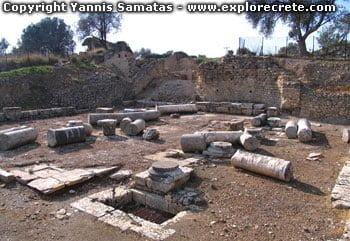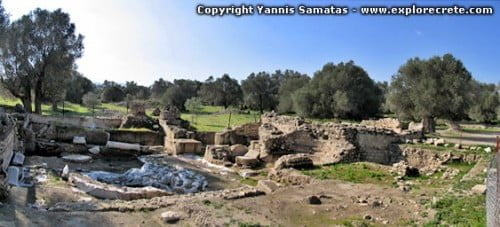The Praetorium in Gortys
The Praetorium of Gortys becomes ever more impressive as we circle round the fenced-off area to our left and stand amazed at its size, the number of buildings and the majesty still revealed in the ruins. The Praetorium served as the seat and residence of the Praetor, the Governor of the Roman Province of Crete and Cyrenaica, when Gortys was the capital of Crete.

The first building phase of the Praetorium is dated to the 1st century AD, but it was altered significantly over the next eight centuries. Archaeologists have brought to light a bathhouse complex, a shrine dedicated to the Augusts, a colonnade court, a law court (the law basilica) and many other buildings for various uses.
Before us we see the ruins of impressive buildings, luxurious paved floors, fallen marble columns, sections of marble conduits and an extremely well-preserved Roman altar which looks like a small temple.
In the east section of the fenced-off area is the Augustaeum, notable for its mass of marble column bases, columns, interior wall decorative elements and floor paved with large slabs. Right in front of the temple is a paved courtyard which was once surrounded by colonnades.
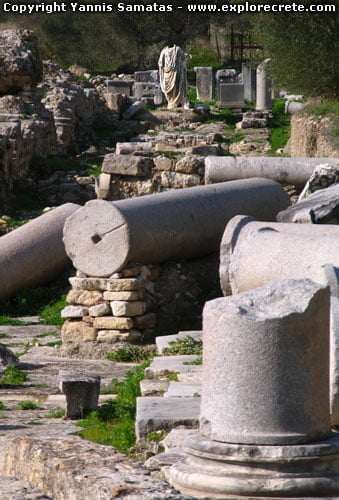
In the northeast corner of the fenced area is a covered space full of Corinthian column capitals with their distinctive acanthus-leaf decoration.
Continuing our walk around the area, we come to the point where the path meets a cobbled pathway to the right. From here we can see the basilica of the Praetorium, a rectangular building used as a court of law, with the headless statue of a Roman officer on its north side. Still visible are the stone bases of statues raised in honour of emperors and nobles of the once-mighty Roman Empire.
- NEXT: The Nymphaeum of Gortys
© explorecrete.com All Rights Reserved. Reproduction or copying without permission is prohibited.

